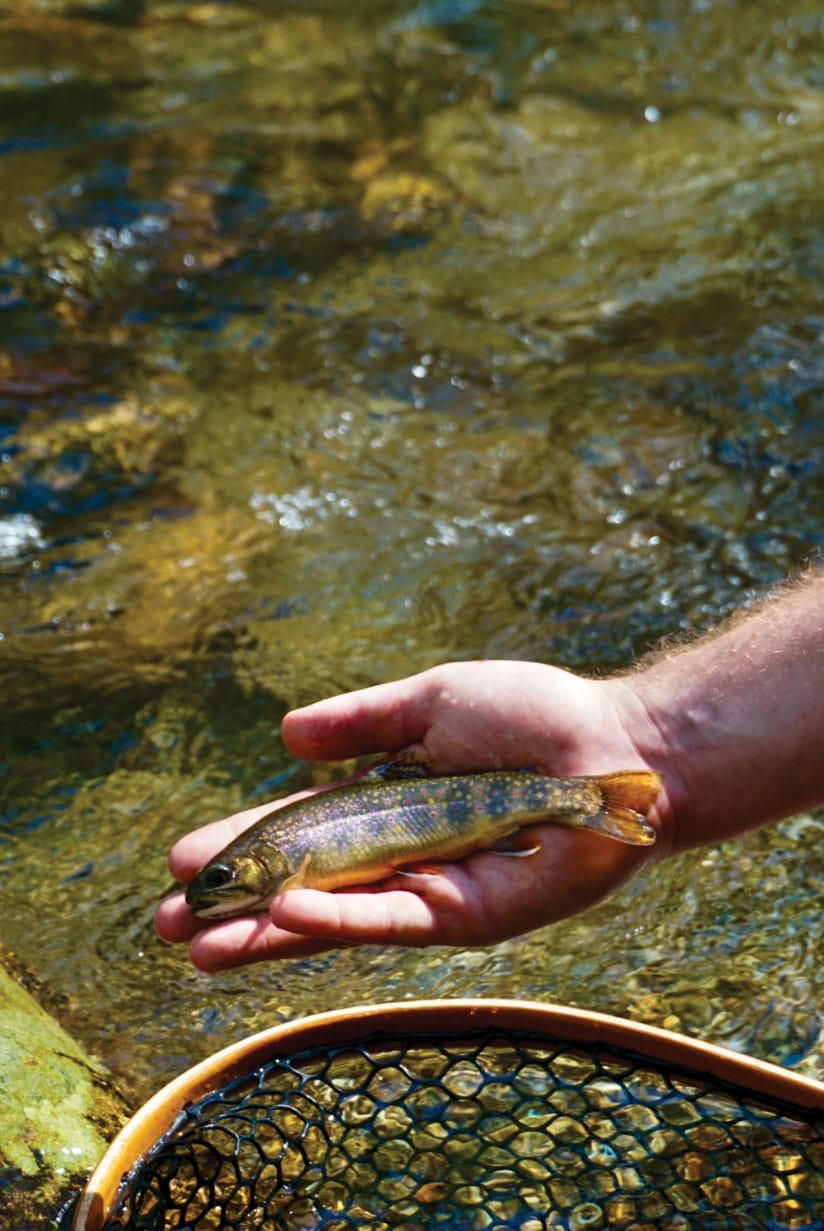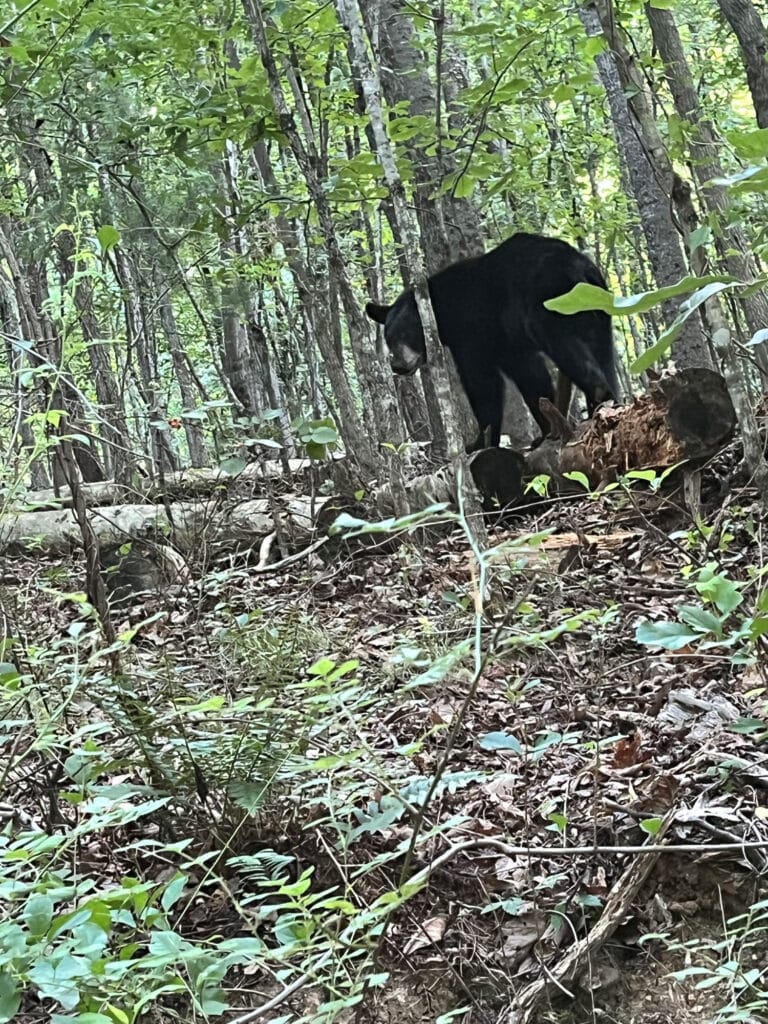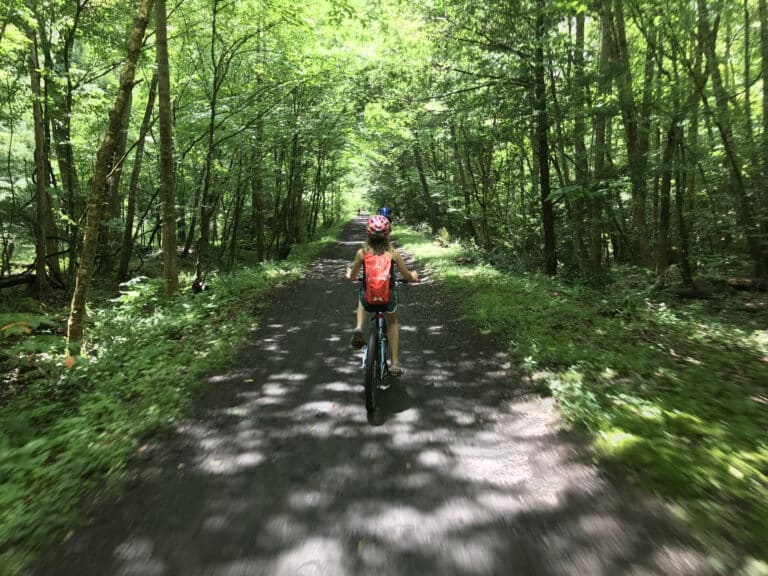Upstream from Here
THE EASTERN BROOK TROUT: Among certain folks in the South as revered a treasure as Dolly Parton. Walk into any riverside general store from the Allegheny River of southern Pennsylvania to that top little caddy corner of Georgia, and I’d bet you a nickel you’ll find some fellas sipping coffee from a Styrofoam cup, waiting until the stream warms up for the morning hatch. Fly fishers are the last great purists, and if they’re worth their weight in soft hackle, they’ll be chasing brook trout.
You Should Have Been Here When
My first forays into fly fishing weren’t pretty. I was sliding around mossy rocks in my Chacos, spooking brookies so bad they’d start jumping to the next pool like sockeye salmon. After cursing the river for one single four-inch trout to snag my line, I’d sulk back to the local fly shop to ask what I did wrong this time. In one of those early inquiries, I was comforted, you went on the wrong day, mildly reassuring, because you should have been there 30 years ago.
Thirty years ago is just about when the Clean Air Act went into effect, heavily contributing to a 90 percent decrease in sulfur dioxide emissions and deposition, as reported by Virginia Trout Stream Sensitivity Study (VTSSS). Leading to this, the U.S. industrial revolution cranked heinous levels of sulfur dioxide into the atmosphere, resulting in acid rain (precipitation at a pH of 4.4 or below, compared to the pH of normal, healthy rain at 5.6 pH), which effectively scalped forests and their water systems throughout Appalachia.
That kind of acid wrings the life out of a stream like you do a dry-dropper rig when your foam bit just won’t stay up. First, the little things go: the filtering nutrients growing on the underbellies of limestone streambeds, the micro insects, the mayflies, and all that eats those things up. Then the small brush along the river withers and the cover canopy’s thick hairline fades as the sun has more topwater surface time. In turn, the water warms up and hangs out longer at that 65+ degree range where the brookies hunker down and hide from herons, invasive brown trout, and the stress that comes with being fooled by a buffet of false proteins tied to 6x tippet.
According to VTSSS, brook trout populations have diminished by an estimated 66 percent since they started collecting data in 1987, so it would seem 30 years ago was in fact the time to go fishing after all.
That’s disheartening for those of us who love to explore backcountry streams with a fly rod. I don’t have the hard numbers on it, but I can’t imagine anglers tears dumped into the river do much to even out acid levels, and I’m certain they don’t plunge 20-inch natives back into the river from the clouds of fishy heaven. But there is hope.
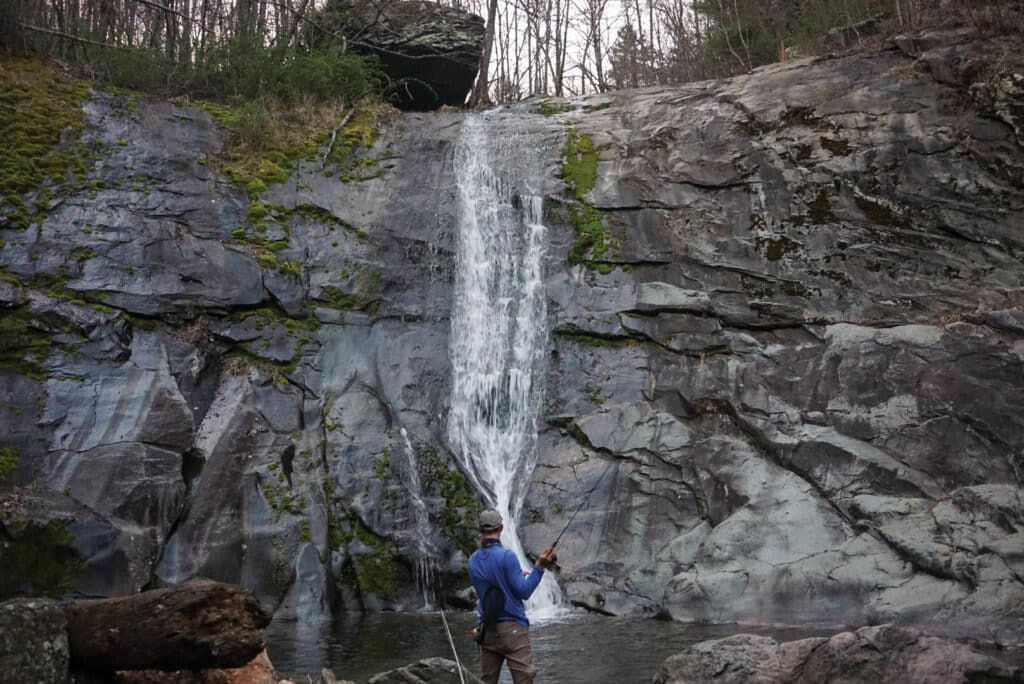
Resilient Streams
Despite decades of pollution-induced stress, the molecular health of Virginia streams is stronger than expected. In its 2021 survey, VTSSS, led by the University of Virginia in partnership with Trout Unlimited, sampled water from approximately 450 stream sites in 34 counties, representing most of the mountain headwater streams in Virginia that support reproducing brook trout.
“Acid Neutralizing Capacity is an overall metric of stream chemical habitat health with a threshold of 50 microequivalents per liter or higher considered ‘suitable’ for aquatic biota,” explained Ami Riscassi, the survey’s senior research scientist and projects coordinator. “Since monitoring began in 1987, we look for positive trends in ANC as well as negative trends in sulfate, the main acidifying agent in this region. Biologically, macro-invertebrates and fish have also been consistently monitored at a subset of those streams.”
VTSSS reports that 86 percent of Virginia streams have improved molecular health, as median ANC levels have jumped from 62 to 85 percent across the state. For all that’s gone awry, these fish, these streams, are more resilient than we give them credit for.
“Conservation success in the short-term means maintaining the spatial distribution (occupied stream habitat) of brook trout that we currently observe,” Steve Reeser, VDWR Regional Fisheries Manager, told Blue Ridge Outdoors.
I wasn’t brookie fishing when the Clean Air Act was passed in 1972; I never stepped foot in a commonwealth stream when VTSSS started monitoring them in 1987. By the glory-days old-schoolers occupying the general store’s standards, I’m a newbie, a buzzy little non-aquatic pest wading in their stream, whose value only lies in that if there are eventually enough of me, they can tie my pattern out of deer hair and feed it to the fishes.
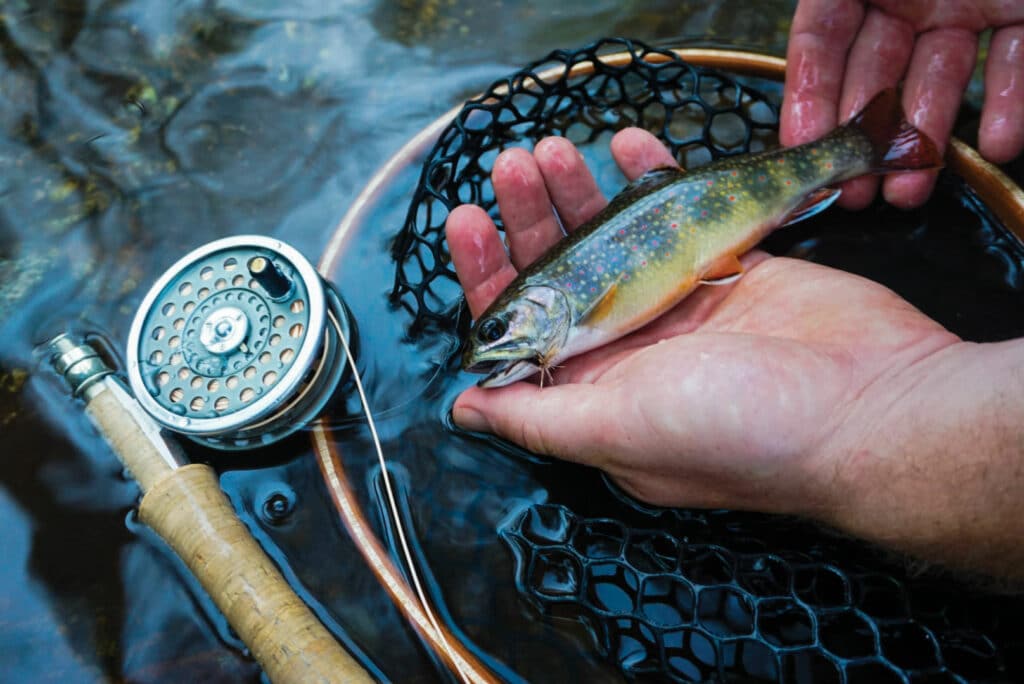
How We Can Help
The afternoon bite awes me when the sky dims and the late-day sulfurs hatch. The steady pulsing of the buggy water pouring from one plunge pool to the next drains the mundane grievances moping around my mind. It comforts me to know that if it all were to go down the tube, long after clumsy-footed anglers finish their perpetual stumble through limestone streambeds with pockets full of hooks braided in yarn, that it would all come back little by little.
Until then, we anglers, hikers, and stream swimmers can do our part. “In my opinion, interested citizens can do the most to conserve and in some cases help restore brook trout populations by supporting cleaner/greener energy production, sustainable forestry management practices in the Appalachian Mountain Region, aquatic organism/fish passage improvement projects, and prohibiting the spread of non-native or invasive species,” Resser explains.
Restoration of an ecosystem is a long, slow swim through a polluted stream of politics and preservation. What we do today won’t result in reaching into the stream and pulling out more tomorrow or next month. But come back next year when you realize that biggin’ in your favorite deep pool held over for another year, then you’ll start to see.
We have the advantage of enough data over enough time to accept that, though things have been going in the wrong direction, they’re not too far gone. We can sit back and enjoy the twilight years of brook trout or get up and be the catalysts of their resurgence. Steady ANC levels alone aren’t enough to save a species, but it creates an environment where they stand a chance and can take some punches, get up off the mat for another round, another dry summer, and another spawn.
Pulling a brook trout out of a clear limestone pool with an orange pumpkin belly and blue halos spotted down its sides is the closest we’ll ever get to holding the beating heart of Appalachia in our hands. Let it serve as a reminder of what can be, and still is, that a little colored-up fish slipping back into a shallow run is getting away with something, just by still being here at all.
All photos by BJ Poss
